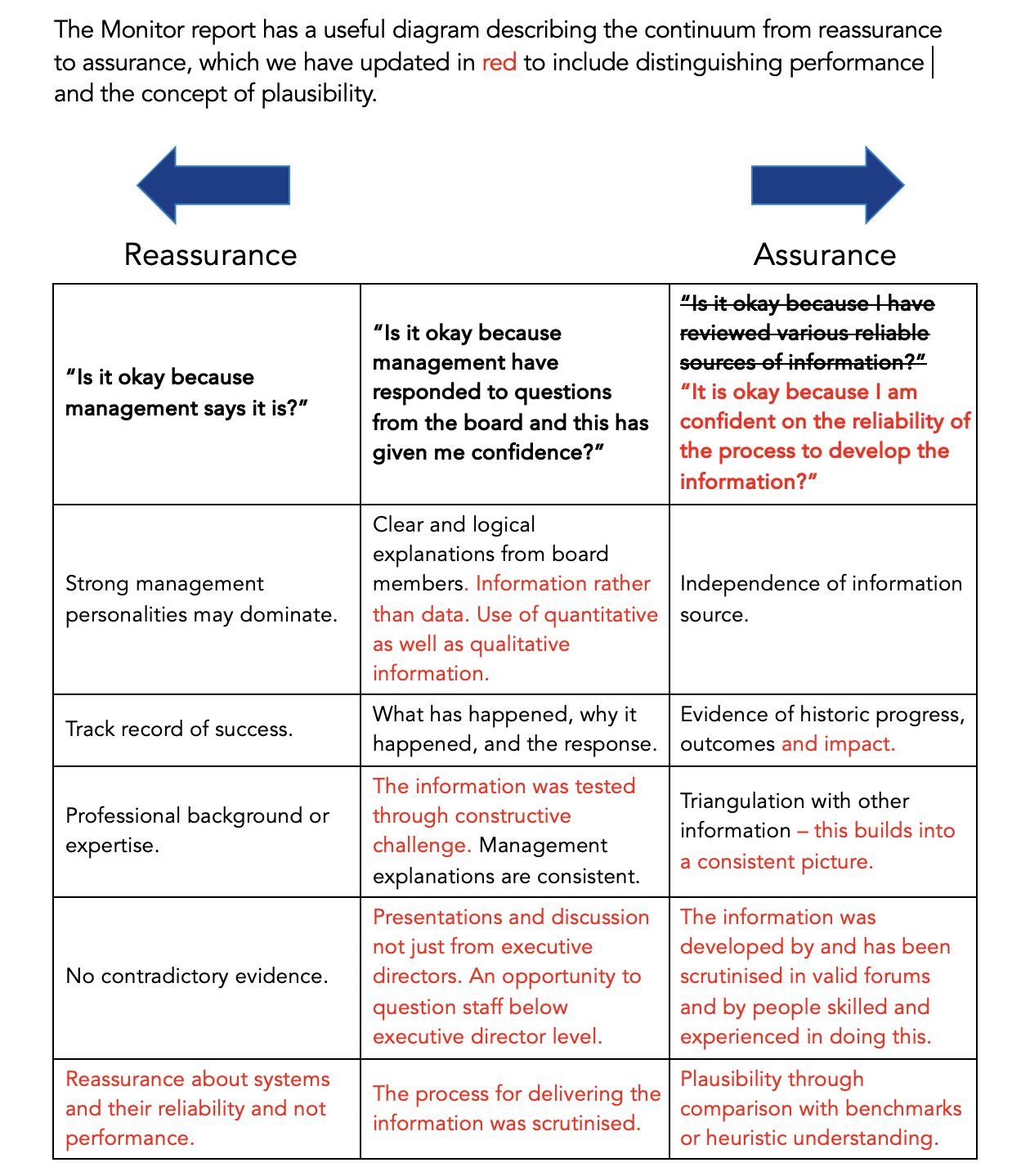Assurance: plausibility and the rule of thumb
10 August 2023
GGI CEO Andrew Corbett-Nolan argues that assurance is more than a by-product of governance – it’s increasingly crucial to the effective function of any modern board.
Assurance is the dull but necessary part of the board’s business – it’s strategy that calls for higher skills, right? At GGI we’d disagree.
Assurance is more than a by-product of governance; it is specific activity at the heart of good governance and one that carries a required skillset. Despite being increasingly crucial to the effective function of any modern board, assurance rarely features explicitly in the many lists of key duties of a board, and it is not uncommon for the word to be conspicuously absent from NHS NED role descriptions.
Governance vs management
We have long argued that one of the distinctions between governance and management is that in RAG-rated reports managers need to focus on the reds and those who govern on the greens. The reds have already identified issues to resolve, whereas the art of governance is to be assured that the greens really are green. We cannot think of a major governance failing where the greens were reliably green.
This brings us to the distinction between reassurance, assurance and indeed assumption. A board is reassured a green is green because the reporter believes this to be true. Assurance is the process of testing greens and looking to the evidence and context to be certain that they are actually green. Assurance moves beyond taking an issue on trust.
Some of the best thinking about assurance has been around for over a decade. The 2013 Monitor report on quality governance [1] is worth reading regardless of the sector, and we can now add further insight from the current context. For example, the report points boards towards two high-level challenges:
- What are the main sources of the assurance upon which you rely?
- Are you able to distinguish between assurance and reassurance?
Today we would add three essential supplemental challenges:
- Are you confusing assurance and performance?
- How plausible is the reliability of the system upon which you rely?
- Are you getting positive or negative assurance? (which is to say how robust is the evidence to support the assurance)

Lack of imagination
Frequently we see a lack of imagination, or even discernment, in the sources or types of assurance. For example, assurance reports around important risks such as reputation or the state of relationships with partners/suppliers are often confined to the chief executive’s report rather than any hard data, or independent third-party information. There is a tendency to measure the measurable rather than what is important to measure. Likewise, data is often presented raw without being worked up into information pertinent to the assurance purpose. Often the data is actually measuring performance rather than assurance. Performance is relevant to assurance but is not the same.
Plausibility is an important ingredient of modern assurance systems. It depends on both a comparison from the experience of peers, often derived through benchmarking, and on heuristic learning – particularly from the non-executives bringing their independent minds and life experience from other sectors.
Heuristic problem-solving is derived from previous experience with parallel issues. It is particularly rich when drawn from the outside and independent from the potential for groupthink. It cannot be relied on alone because of the tendency to oversimplify what are often complex, context-specific issues. However, this does not invalidate the usefulness of the rule of thumb or an educated guess.
Assurance: vital to effectiveness
GGI is working to support boards to modernise how they work. As the world becomes less certain and more chaotic, organisational risk profiles increase and strategies are more threatened by volatility and uncertainty. In this context, the assurance element of a board’s work becomes both more challenging and more vital to its effectiveness.
Comparing yourself with yourself in the past is no longer a satisfactory way for a board to govern an environment laden with risks.
In 2021 we wrote: ‘Governance arrangements that are neat and look persuasive on paper can design out intelligent oversight and do no one any favours, least of all the busy executive only motivated to invest in activity that genuinely adds value.’
Useful assurance that will add value rather than being just ritual is becoming a higher-level activity for boards, and one that is increasingly reliant on directors bringing their whole selves to board meetings. Soft skills combined with hard, purposeful evidence that sense-checks the plausibility of what is in front of the board is increasingly the hallmark of high-performing boards.
Notes:
[1] Monitor, ‘Quality governance: How does a board know that its organisation is working effectively to improve patient care? ‘, London 2013
